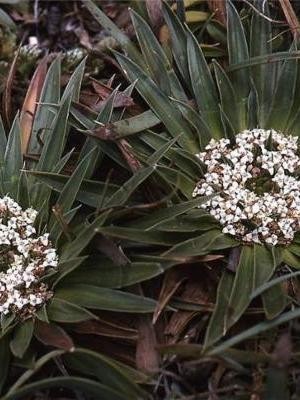Tobaccoroot
(Valeriana edulis)

Description
Valeriana edulis, the tobacco root or edible valerian, a species in the family Caprifoliaceae, is a dioecious perennial flowering plant native to western and central North America. Despite its common name, tobacco root is not closely related to tobacco, but is instead more closely related to elderberry, honeysuckle, and teasel (Caprifoliaceae s.l.). Tobacco root is a long-lived herbaceous plant. Inflorescences are born on elongated, sparsely leaved stems usually around 0.75–1.5 meters tall. Flowers are small (0.5 mm diameter for pistillate flowers, 3–4 mm diameter for stamenate flowers) and cream or white. Flowering occurs in the summer months throughout most of its range. Tobacco root and its close relatives in the Edulis clade of Valeriana is most closely related to the Central American clade. Tobacco root typically grows in moist montane meadows and subalpine parks between 1,600 and 3,500 m (5,200 and 11,500 ft) elevation, although herbarium collections are reported several hundred meters higher. Growth data indicate that individual plants may live up to 300 years. The small, shallow flowers of tobacco root make its pollen and nectar resources available to a wide range of small, generalist pollinators. In Colorado, solitary bees, flies, and moths are the most frequent floral visitors. Tobacco root has long been used as food. One of the earliest written accounts is from the journal of explorer John Charles Frémont in the 1840s. Valeriana is a genus of flowering plants in the family Caprifoliaceae, members of which may by commonly known as valerians. It contains many species, including the garden valerian, Valeriana officinalis. Some species are native to Europe, others to North America and South America (especially in the Andes). Fossil seeds of Valeriana sp, among them †Valeriana pliocenica, have been recovered from Late Miocene deposits of southern Ukraine, from Pliocene deposits of south-eastern Belarus and Bashkortostan in central Russia. The fossil seeds are most similar to the extant European Valeriana simplicifolia.
Taxonomic tree:







